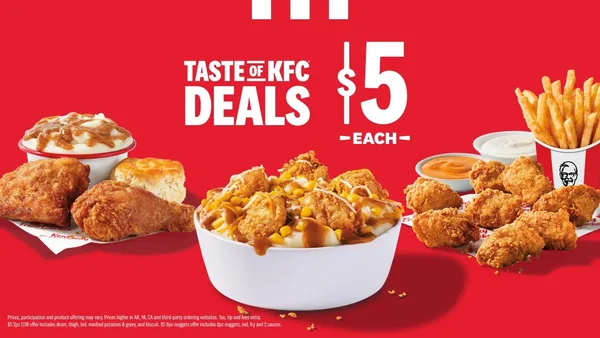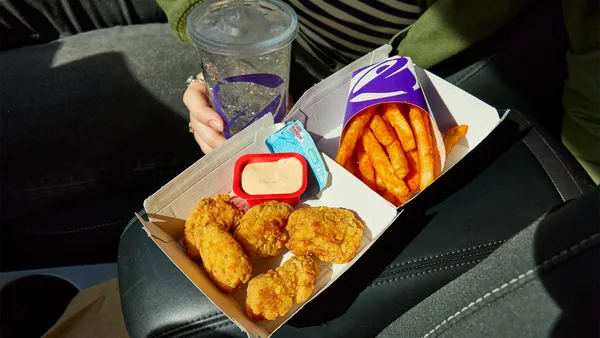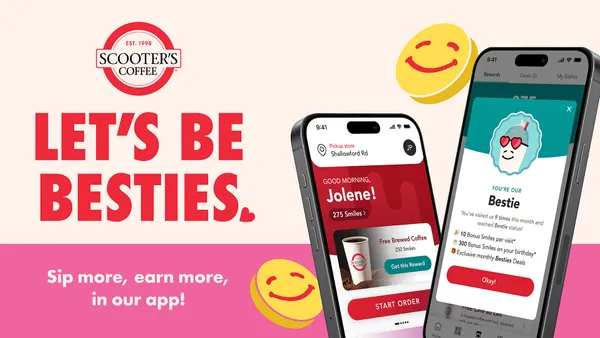Dive Brief:
- White Castle has changed its loyalty program, Craver Nation Rewards, to have a dollars-for-points accumulation scheme and three reward tiers, the company said Thursday.
- According to the website for Craver Nation, consumers will earn five points for every dollar spent and can level up from the Adventurer tier to the Champion tier by earning 300 points. Diners can access the Legend tier after earning 600 total points.
- Each tier grants access to gamified loyalty rewards, which White Castle calls “quests.” Completing quests rewards consumers with additional points and specific rewards. The quests increase in difficulty from tier to tier.
Dive Insight:
White Castle’s quests are designed to encourage specific consumer behaviors, like “trying new menu items or visiting Castles during late-night,” the company said in the press release.
Late-night sales are an important part of White Castle’s strategy, and the chain said earlier this year that it was hiring more workers to ensure proper staffing between 7 p.m. and 3 a.m. The brand was already using its loyalty platform to encourage late-night visits before shifting to the tiered, quest-centric model. It offered guests deep discounts on chicken rings during late-night hours, for example.
Aaron Lahman, White Castle’s digital marketing manager, said the shift in loyalty strategy showed White Castle is working to build deeper bonds with its customers and that the new program was designed based on customer insights.
“This newest iteration of our program still offers rewards, it lends itself to more engagement with our Cravers. It's more like a game where they complete quests to earn badges and unlock new tiers to get special perks, rewards and exclusive benefits,” Lahman said. “Our customers are more than just transactions.”
As points-based loyalty programs have become industry standard, brands looking for deeper engagement and points of differentiation have turned to reward tiers based on frequency and spend to create a sense of progression for members. Subway, for instance, added spend-based tiers to its loyalty program last year. These programs can be useful for incentivizing specific consumer behaviors: Chuck E. Cheese’s tiered subscription pass, for example, is meant to drive repeat visits with escalating discounts.
While not explicitly tied to its rewards app, Chipotle’s marketing often includes a game-like element, encouraging consumers to interact with the brand on social media and search for items in the real world. Burger King has also looked to game-like tactics, including actual mobile games, to drive digital engagement with the brand.














